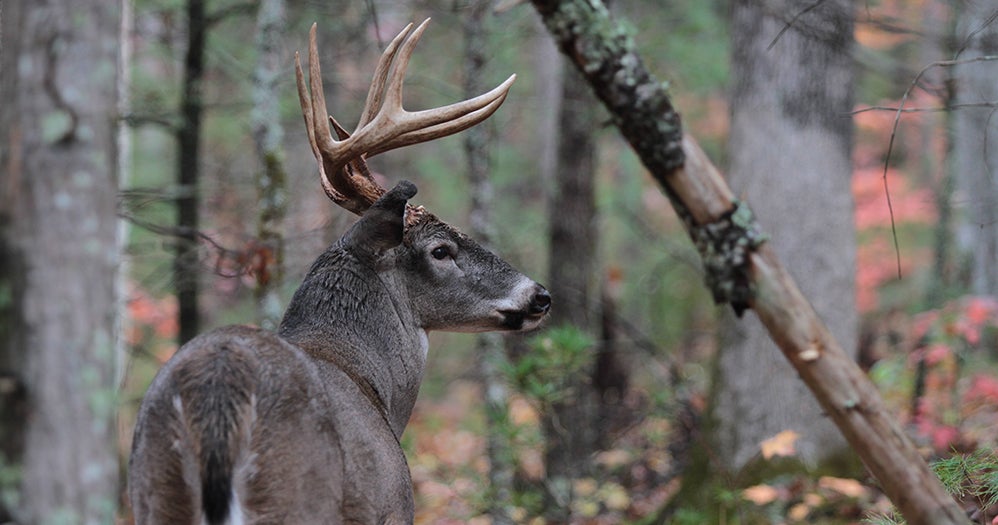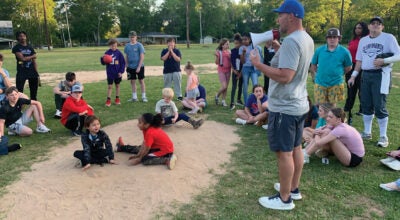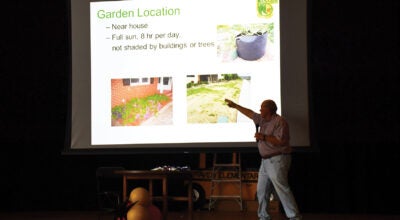Mississippi State, Michigan State working on CWD research projects
Published 8:02 am Thursday, March 21, 2024

- MDWFP IMAGE
JACKSON — Mississippi State University and Michigan State University will play on the basketball court Thursday at 11:15 a.m. in the NCAA basketball tournament. Outside of March Madness, the pair of MSUs are working on Chronic Wasting Disease research projects looking at supplemental feeding.
West Virginia Division of Natural Resources’s Samantha Courtney authored a paper looking at Chronic Wasting Disease risk for deer and supplemental feed sites similar to a project Mississippi State worked on. The work for the project was carried out with Michigan State University where Courtney did her masters program.
Courtney presented her research that showed supplemental feeding created unnatural congregations of deer at the Southeastern Deer Study Group from February 15 to February 18.
Michigan State’s research project looked at behavioral categories classified as direct, self and environment contact to illustrate a range of behaviors potentially linked to CWD prion transmission. Chronic Wasting Disease is 100 percent always fatal disease in deer.
Courtney defined direct contacts as any time an observed individual’s body came into direct contact with the body of another individual. Deer behavior such as flailing, striking, pushing, head to head, nuzzling and grooming are examples of direct contact.
Environmental contacts were defined as when an observed individual came into contact with the surrounding environment in some fashion. Those behaviors include browsing woody vegetation, nose to the ground, scraping the ground with their hoof or rolling on the ground. Self contact was defined as any time the observed individual came into direct contact with their own body such as grooming themselves or scratching their body or head with their hoof.
She used camera trapping on private lands and road based transect surveys to quantify behaviors amongst sex and age classes at various congregating areas. These areas included bait sites, food plots and natural occurring forage.
Her road surveys produced 395 observations while video observations produced 2,047 data points. Deer were observed at bait sites 1,631 times and 416 times at food plots. Courtney said the reason the deer were observed more in bait sites is due to a few possible reasons.
Bait sites had corn placed inside a small square in front of the camera while food plots covering a greater area do not force deer in front of the camera.
“Also, it is entirely possible that deer became accustomed to the regular renewal of the corn at bait sites, unlike a food plot, which in winter, can get browsed to the point where little food may remain,” Courtney said. “We did not have any radio collared deer so we cannot say if they selected for one food source more than the other. And our bait sites and food plots were spaced far enough away from each other that we wouldn’t be observing the same deer.”
She said they used the same protocols to measure contacts among deer at both sites. The project was unable to detect deer outside of the frame of the camera but the work highlights the larger numbers of deer are likely to frequent bait sites rather than food plots. Courtney concluded this could lead to more social strife and aggressive behaviors.
Direct contacts of deer in food plots were are 1.92 fewer contact events occurring compared to bait sites and contacts of deer at road transects was 1.12 fewer contact events than bait sites.
“Which might not seem like a huge difference,” Courtney said. “When direct contacts are already happening rather infrequently and you add those up over the course of a day, week or month it could make a difference in terms of disease transmission.”
Self contact of deer in food plots was 1.14 fewer contact events than bait sites and environmental contacts in food plots was 0.68 fewer contact events than bait sites and transects were 0.65 fewer contact events than bait sites.
“My results indicate that the likelihood of direct and environmental contacts at bait sites exceeds contacts at food plots and naturally occuring forage,” Courtney wrote. “In areas of CWD concern, food plots and natural forage offer a less risky food source for deer.”





